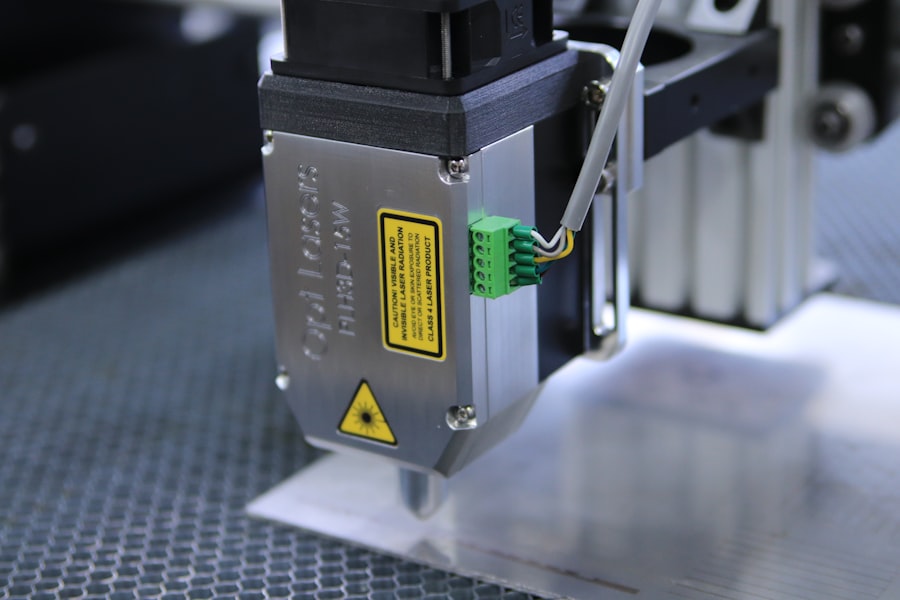When you consider laser hair removal, it’s essential to grasp how the process works. At its core, laser hair removal utilizes concentrated beams of light to target and destroy hair follicles. The laser emits a specific wavelength that is absorbed by the pigment in the hair, effectively damaging the follicle and inhibiting future hair growth.
This method is not only efficient but also minimizes damage to the surrounding skin, making it a popular choice for many seeking a long-term solution to unwanted hair. As you prepare for your first session, you may be curious about what to expect. Typically, a consultation precedes the actual treatment, where a trained professional assesses your skin type, hair color, and overall health to determine the best approach for you.
During the procedure, you might feel a slight tingling sensation or a mild snapping feeling as the laser targets each hair. Most sessions last anywhere from a few minutes to an hour, depending on the area being treated. Understanding this process can help alleviate any anxiety you may have and set realistic expectations for your journey toward smoother skin.
Key Takeaways
- Laser hair removal targets hair follicles with concentrated light energy to inhibit future hair growth
- Factors such as hair color, skin color, hair thickness, and treatment area can affect the number of sessions needed
- Typically, 6-8 sessions are required for optimal results, with touch-up sessions as needed
- Sessions are usually spaced 4-6 weeks apart to target hair in different growth cycles
- Consistency in treatment schedule is crucial for best results and to prevent hair regrowth
- Progress should be monitored and treatment plan adjusted as needed for optimal results
- Additional treatments may be needed due to hormonal changes, medication, or underlying medical conditions
- Tips for maximizing results include avoiding sun exposure, shaving before treatment, and following post-treatment care instructions
Factors Affecting the Number of Treatments Needed
The number of laser hair removal treatments you will require can vary significantly based on several factors. One of the most critical elements is your hair type and color. Darker hair tends to respond better to laser treatments because the contrast between the hair and skin allows the laser to target the follicles more effectively.
Conversely, if you have light or fine hair, you may find that it takes more sessions to achieve the desired results, as the laser may struggle to identify the follicles. Your skin type also plays a vital role in determining how many treatments you will need. Individuals with lighter skin tones often see quicker results because the laser can easily differentiate between the hair and skin pigment.
On the other hand, those with darker skin may require additional sessions due to the increased risk of skin damage or discoloration. Additionally, hormonal factors can influence hair growth patterns, meaning that individuals with hormonal imbalances may need more treatments to achieve lasting results.
Typical Number of Treatments Required

While individual experiences may vary, most people find that they need between six to eight sessions for optimal results.
However, it’s important to remember that this is just an average; some individuals may require fewer sessions, while others might need more, depending on their unique circumstances.
The effectiveness of each session can also depend on how well you adhere to the recommended treatment schedule. Each session typically targets hairs in their active growth phase, known as the anagen phase. Since not all hairs are in this phase at the same time, spacing out your treatments appropriately ensures that you are targeting as many follicles as possible during each visit.
This strategic approach can help you reach your hair reduction goals more efficiently.
Frequency of Laser Hair Removal Sessions
| Body Area | Frequency of Sessions |
|---|---|
| Face | 6-8 sessions, every 4-6 weeks |
| Underarms | 6-8 sessions, every 4-6 weeks |
| Legs | 6-8 sessions, every 8-10 weeks |
| Bikini Area | 6-8 sessions, every 4-6 weeks |
The frequency of your laser hair removal sessions is another crucial aspect of the treatment plan. Generally, sessions are spaced about four to six weeks apart. This interval allows time for your hair to cycle through its growth phases and ensures that you are targeting hairs when they are most vulnerable.
Sticking to this schedule is vital for maximizing the effectiveness of each treatment. However, it’s essential to listen to your body and consult with your practitioner if you have any concerns about timing. Some individuals may find that their hair grows at different rates or that their skin reacts differently after each session.
Your practitioner can help adjust your treatment plan based on your progress and any changes in your hair growth patterns.
Importance of Consistency in Treatment Schedule
Consistency is key when it comes to laser hair removal. Adhering to your treatment schedule not only maximizes results but also minimizes the risk of regrowth. When you miss appointments or extend the time between sessions too long, you may find that some hairs have time to grow back before they can be effectively targeted by the laser.
This can lead to uneven results and prolong your overall treatment timeline. Moreover, maintaining a consistent schedule helps establish a rhythm for your body’s hair growth cycles. By regularly attending your sessions, you ensure that you are addressing hairs in their active growth phase more effectively.
This consistency can lead to quicker and more satisfactory results, allowing you to enjoy smoother skin sooner rather than later.
Monitoring Progress and Adjusting Treatment Plan

As you embark on your laser hair removal journey, monitoring your progress is essential. After each session, take note of any changes in hair growth patterns and discuss these observations with your practitioner during follow-up appointments. They can assess how well your body is responding to the treatment and make necessary adjustments to your plan if needed.
Your practitioner may recommend altering the frequency of sessions or adjusting the laser settings based on your individual response. For instance, if you notice that certain areas are responding more slowly than others, they might suggest increasing the intensity of the laser or changing the technique used during treatment. Open communication with your practitioner will ensure that you receive personalized care tailored to your specific needs.
Potential Factors Leading to Additional Treatments
While many individuals achieve satisfactory results within the typical range of six to eight sessions, some may find themselves needing additional treatments due to various factors. Hormonal changes are one significant reason why some people experience continued hair growth even after completing their initial treatment plan. Conditions such as polycystic ovary syndrome (PCOS) or other hormonal imbalances can lead to increased hair production, necessitating further sessions.
Additionally, lifestyle factors can play a role in how effective your treatments are over time. For example, weight fluctuations or changes in medication can impact hormone levels and subsequently affect hair growth patterns. If you notice an increase in hair regrowth after completing your initial treatments, it’s essential to consult with your practitioner to determine whether additional sessions are necessary and what adjustments might be beneficial.
Tips for Maximizing Results from Laser Hair Removal
To ensure that you get the most out of your laser hair removal experience, consider implementing a few practical tips. First and foremost, follow all pre-treatment guidelines provided by your practitioner.
Proper preparation can significantly enhance the effectiveness of the treatment and reduce potential side effects. Additionally, maintaining a healthy lifestyle can contribute positively to your results. Staying hydrated and eating a balanced diet can support overall skin health and potentially improve how your body responds to treatments.
Lastly, be patient with yourself throughout this process; achieving smooth skin takes time and commitment. By staying consistent with your appointments and following your practitioner’s advice, you’ll be well on your way to enjoying long-lasting results from laser hair removal.
If you are wondering how many treatments you need for laser hair removal, you may want to check out this article on inlaserhairremoval.com. This article provides valuable information on the number of sessions typically required for effective laser hair removal treatment. It can help you understand the process better and make an informed decision about your hair removal journey.
FAQs
What is laser hair removal?
Laser hair removal is a cosmetic procedure that uses a concentrated beam of light (laser) to remove unwanted hair. The light energy is absorbed by the pigment in the hair follicles, which damages the follicle and inhibits future hair growth.
How many treatments do you need for laser hair removal?
The number of treatments needed for laser hair removal varies depending on factors such as the individual’s skin and hair type, the area being treated, and the specific laser technology being used. On average, most people require 6-8 treatments spaced 4-6 weeks apart to achieve optimal results.
Why do multiple treatments of laser hair removal necessary?
Multiple treatments are necessary for laser hair removal because hair grows in different stages and the laser can only effectively target hair in the active growth phase (anagen phase). By spacing out treatments, it allows the laser to target hair in different stages of growth, resulting in more thorough and long-lasting hair reduction.
Are touch-up treatments needed after completing a full course of laser hair removal?
After completing a full course of laser hair removal treatments, some individuals may require occasional touch-up treatments to maintain the results. Factors such as hormonal changes, aging, and genetics can cause new hair growth over time, and touch-up treatments can help manage this.






